Caves
Since antiquity, humans have been using, living in, or hiding in caves, and our fascination with them is just as old. They connect us to our distant past because prehistoric remains and artefacts have been preserved in them, that outside would have been lost, especially in the north where Ice Age glaciers scoured everything from the surface. Our ancestors therefore had some choice over whether to venture into these places; so we today are "cave people" as much as they were.
Understand
Caves are natural underground spaces that are formed by various geological processes; they may have been adapted and modified for human use. They range from tiny recesses, to gigantic multi-mile systems such as Mammoth Cave in the United States. The forms of caves are as varied as the geological processes by which they form.
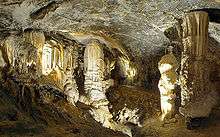
A common type of cave is created through the dissolution of limestone, marble, dolomite or gypsum by slightly acidic water. This is typical for the karst landscape found for instance in South-West Slovenia, the Karst or Kras region that has given name to this particular topography. Other regions also have karst topography; see #China and #Vietnam below.
Caves can also be formed by erosion caused by ocean waves (often helped by frost weathering), often referred to as sea caves. Due to the post-glacial rebound (rise of land masses) sea caves are also found on dry land. One striking example is the "Hole in the hat", the cave right through the hat-shaped Torghatten summit in Nordland, the hole is now 110 meters above sea level which corresponds to sea level during the ice age.
In areas where there has been active vulcanism, you may also find caves inside now dormant lava tubes, which formed as the outer portion of a lava flow cooled more quickly then the centre, leaving a hollow cavity, when the inside flowed away or withdrew.
Not content with natural caves, humans have constructed or expanded countless works underground from galleries and pits for mineral extraction, places to live such Cappadocia in Turkey, through to contemporary engineering mega-structures. These are dealt with in separate guides.
Get in
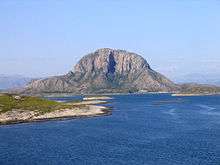
The easiest natural underground works to access are tourist show caves, many of which have had tourist facilities installed specifically to aid access by visitors.
True 'caving', as considered by the many clubs that exist, requires an extended amount of specialist knowledge and expertise as well as demanding minimum fitness level. In addition it will certainly require the traveller to purchase specific technical equipment. For those that clearly understand and fully respect the risks it can be highly rewarding, but as with any extreme activity, the traveller must know their limits. If you have any doubts as a traveller as to your fitness, both physically and mentally, stick to show caves and underground works clearly open and adapted for the casual tourist.
Viewing natural caves that are not clearly adapted for tourist visits will depend on a number of factors, such as your fitness level, tolerance of discomfort level and the goodwill of owners and authorities to let you enter or explore the caves and works your desire leads you to. Obtaining the consent of landowners and the owners of the cave is vital, as is obtaining in advance any relevant official permits from governmental agencies. Visiting these sites will also involve careful research to get the risks down to an acceptable level.
Military defence facilities (even if seemingly abandoned or out of use) often remain highly sensitive sites. An unexpected or unannounced visit could at best lead to a lengthy interrogation, with considerably worse outcomes depending ultimately on the mood of the personnel you encounter. You should make formal contact in writing with the relevant military authorities as soon as you have firm travel plans. Do not be disappointed if a planned or agreed visit has to be cancelled or curtailed for operational and security reasons, or if you are curtly refused with no reason at all.
See
Australia
- 🌍 Naracoorte Caves National Park Visitor Information Centre, ☎ +61 8 8760 1210. 9AM-5PM Daily (exceptions apply). Varies.
Bulgaria
- 🌍 Magura Cave, outside Rabisha, near Belogradchik. One of the most important European painted caves with an extended gallery of about 750 paintings, which date back to the Neolithic and thought to be about 8-10,000 years old.
China
- Guilin and Yangshuo. The region around these towns in Guangxi (Southwest China) is one of China's most famous and popular tourist areas, primarily because of sensational scenery. The terrain is karst limestone and includes many caves. See the city articles for details on caves that are set up for tourist visits. The area is a major destination for rock climbers, and some of the climbing shops in Yangshuo organise trips to other caves; these all need at least basic rock-climbing skills, and some require advanced spelunking skills and equipment.
- Mogao Caves. A group of caves near Dunhuang in Gansu Province, in the west of China along the old Silk Road. They have many Buddhist frescoes, mostly from a few centuries CE, and are on the UNESCO World Heritage List.
- Panzhihua. This is a mining town in the south of Sichuan, on the highway and rail line into Yunnan. It is a popular tourist destination, mainly for Chinese travellers. Attractions nearby include forest and mountain areas, and many caves.
- Shilin. The "Stone Forest" outside Kunming, the most famous karst landscape in China.
- Zhangjiajie. Another popular destination for Chinese tourists, famous for karst landscapes, in Hunan province.
Czech Repubic
- Moravský kras karst area in South Moravia has five publicly accessible caves: Punkevní jeskyně, Kateřinská jeskyně, Jeskyně Balcarka, Sloupsko-šošůvské jeskyně and Jeskyně Výpustek.
Finland
- Wolf Cave (in Karijoki). A cave where what is believed to be traces of Neanderthals from before the Ice Age have been found. A wide horizontal fissure, some 2.6 million years old. Entrance not permitted, but much of the cave can be seen from the outside.
France
- The Prehistoric Sites and Decorated Caves of the Vézère Valley Lascaux. One of the world's most important groups of prehistoric sites, and a UNESCO World Heritage Site. Access to the original Lascaux drawings is no longer possible for the general tourist, in order to protect the site's highly sensitive environment. An exact recreation is open to visitors.
Germany
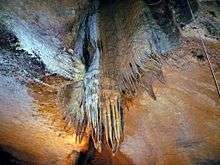
- Being a Karst region, Franconian Switzerland has quite a few caves of which some are open to the public on guided tours or for special events like concerts.
- 🌍 Teufelshöhle (Devil's cave), Schüttersmühle 5, 91278 Pottenstein, e-mail: info@teufelshoehle.de. Summer: 9:00-17:00 Winter: Sunday 11:00–15:00 and on request. A nice limestone cave about 2 km out of the delightful village of Pottenstein with many fascinating rock formations. Adults €4.50 below 15 years: €2.50.
- 🌍 Binghöhle, 91346 Wiesenttal, e-mail: info@wiesenttal.de. Summer 10:00–17:00 winter: upon prior request. Adult €4.50 child (4–14): €2.50.
- 🌍 Sophienhöhle. Summer: Tu–Su: 10:30–17:00, winter and Mondays (except holidays): closed. Run by the same people that also run Burg Rabenstein, a nearby castle, this cave offers breathtaking limestone formations as well as an honest to god real live cave bear skeleton that was discovered on site. Adult: €5.00 child (4–14): €3.00.
India
- The following areas are considered the caving regions of India: Andhra Pradesh, Chhattisgarh, Haryana, Madhya Pradesh, Meghalaya and Uttarakhand. There are literally thousands of caves in India. There are caves that are man-made (rock cut), others which are religious sites (with or without temples), archaeological sites representing early human life and finally natural caves to explore. Those marked with the symbol

- 🌍 Ajanta Caves (Ajantha Caves) (59 km (37 mi) from Jalgaon). 9:00 am to 5:30 pm - Tuesday to Saturday. Ajanta Caves depict the stories of Buddhism spanning from the period from 200 B.C. and 650 A.D. These caves were discovered in the 19th century by some British Officers who had been on a tiger hunt.These 29 caves were built by Buddhist monks using simple tools like hammer & chisel. These caves were the retreats of Buddhist monks who taught and performed rituals in the Chaityas and Viharas, the ancient seats of learning. The elaborate and exquisite sculptures and paintings depict stories from Jataka tales. The caves house images of nymphs and princesses the treasures they contain are a landmark in the overall development of Buddhism
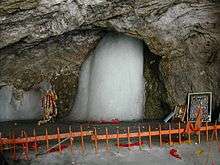
- 🌍 Amarnath Cave (Amarnath Temple), Jammu and Kashmir (near Pahalgam). Ice Lingam of Lord Shiva - a stalagmite formation created from water drops from the roof of the cave that freeze. This is considered a holy cave. Except for a period of time during the summer it is covered with snow. Because of the mountainous terrain it is difficult to reach. In addition, there are many rock cut caves (temples) in India that may be of interest.
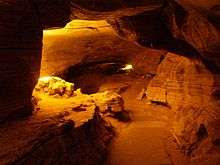
- 🌍 Belum Caves, Bellum, Andhra Pradesh. Formed in black limestone, Bellum Caves is one of the largest and longest caves in India. There are stalactite and stalagmite formations, long passages, several large chambers and fresh water galleries.
- 🌍 Borra Guhalu (Borra Caves), Araku Valley. The Borra Caves are called Borra Guhalu, located in the Ananthagiri hills of the Araku valley on the East coast of India are the deepest cave(s) in India and home to bats, golden gecko, fulvous fruit bat and Insects.
- 🌍 Dandak Cave, Chhattisgarh. Limestone cave located in Kanger Ghati National Park
- 🌍
Elephanta Caves, Elephanta Island. The Elephanta Caves (Gharapurichi Leni) at Elephanta Island are two groups of sculpted caves. Five Hindu caves make up the 1st group and two Buddhist caves the second group. Winthin the caves there are numerous carved panels and shrines. The original stone elephant stone-cut statue for which Elephanta Island was named is now located in the Jijamata Udyaan (zoo and garden) in Mumbai.

- 🌍
Ellora Caves. These are an impressive complex of rock shrines that represent the three faiths of Buddhism, Hinduism and Jainism and were created between the 5th and the 13th centuries CE. The caves are 30 km northwest of central Aurangabad, a few km from Khuldabad, and 330 km northeast of Mumbai in Maharashtra state.

- 🌍 Krem Liat Prah Cave, Meghalaya. Located in the Shnongrim Ridge, Jaintia Hills of Meghalaya, it is the longest cave (25km) yet discovered in India and noted for a large passage called the Airplane Hanger. Meghalaya has over 1000 caves to explore.
- 🌍 Kutumsar Caves (Cotumsar Caves), Chhattisgarh. Limestone caves located in Kanger Ghati National Park - see also: Dandak Cave
- 🌍 Nellitheertha Cave (Nellitheertha Cave Temple), Nellitheertha, Karnataka. Located within the Nellitheertha Cave Temple, it is a cave with a low ceiling. Also located here is a small lake and Shiva Lingam.
- 🌍
Rock Shelters of Bhimbetka. They are an archaeological site representing early traces of human life on the Indian subcontinent. There are rock paintings that are similar to those found in Australia and France.

Indonesia
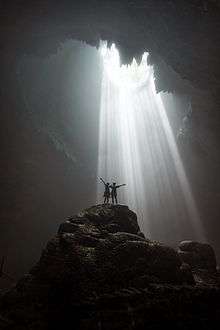
- Jomblang Cave, Wonosari, Yogyakarta. A 50-metre vertical collapse-doline cave and a forest at the bottom of the sinkhole. Connected to the Grubug cave, where you can see rays of sunlight shining through the roof of the cave.
Italy
- Grotta Azzura, Capri. This spectacular grotto features in countless postcards.
- Grotte di Frasassi, Genga, Marche. Extremely colourful caves. One of the "rooms", the "Sala Duecento", has 200 metre-high ceilings.
- Esino Lario has caves
Mexico
- Cenotes of the Yucatán. A network of limestone caves with underground rivers with layers of both freshwater and sea water. Cenotes have played an important role in religious ceremonies of Maya people prior to Christianization and it has been argued that their role as a vital water source made a complex society possible in the first place
Morocco
- 🌍 Caves of Hercules (14 km west of Tangier). Partially natural, partially man made, has functioned as a brothel and a concert venue for the metal band Def Leppard and today probably the most popular place for a quick sidetrip outside Tangier. According to a legend, the Roman god Hercules rested here and supposedly there is an underwater connection across the Strait to Gibraltar. Dh 5.
Norway
Norway's bedrock is generally very old and hard, with only limited occurrence of karst landscape. The Rana, Saltdal, Sørfold and Tysfjord areas in Nordland have some very long and deep caves in the marble bedrock. These were only recently surveyed. The longest known cave is 25 km, the deepest about 600 meters. These caves are mostly for skilled cavers with appropriate equipment, but some are more easily accessible. Norway also has a handful of caves dug by ocean waves in harder rock.
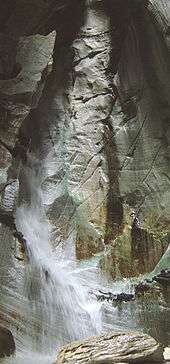
- 🌍 Trollkyrkja (Troll's Church), Fræna near Molde (road 64). Three limestone/marble caves with underground rivers and waterfalls. 400 meter elevation gain to entrance. The area is rich in marble and limestone, and there are open-pit as well as underground mining operations in the area. Free.
- Svarthamarhola, Near Bodø, Nordland. This is the largest natural cave in Scandinavia (30 m from floor to ceiling) and the only cave with a glacier inside. A full day, partly strenuous hike. Guide is needed. Fee for the guide.
- 🌍 Grønligrotta (Grønli cave), Mo i Rana, Nordland. main season ca 20 June–15 August. About 100 m deep and 2 km length. Artificial lighting inside. Regular guided tours in season, also for families. 165/110 kr.
- Kollhellaren, Lofoten. A tall cave near the shoreline. The cave was well known but prehistoric paintings were only recently discovered by students. The cave is now protected by law and can only visited with a licensed guide. With guide only.
- Torghatten, Brønnøysund, Nordland. Cave or hole right through Torghatten summit on an island near Brønnøysund, Helgeland coast. The hole was created by waves and ice. Free.
Philippines
- Puerto Princesa Subterranean River National Park (Palawan Province). A UNESCO World Heritage Site, 8km (5 miles) of navigable subterranean river with tours by boat available. Usually reached from provincial capital Puerto Princesa, an hour and a half away by bus.
- Caves near Mabinay (on bus route between two provincial capitals, Bacolod and Dumaguete). This small town is in a mountainous area of Negros Island and has many caves.
Russia
- 🌍 Kungur Ice Cave (Kungurskaya Cave), in Filippovka, across the Sylva river (A 3.2km/40 minute sign-posted walk from the railway station. Can also be reached by taking minibus #9 from the railway station or take a taxi for RUB150), ☎ +7 34271 62610, e-mail: stalagmit@kungurcave.ru. 10AM-10PM. Kungur Ice Cave is a karst cave discovered in 1703. It is one of the biggest caves in the world. You can enter the cave only on a guided tour, which takes approximately 90 minutes and involves 1.5km of walking. Regular tours start every two hours on the hour. According to the legend, if a woman falls in a certain part of the cave, she is soon to be married.
Slovakia
- 🌍 Slovak Karst National Park (Slovenský kras). Home of more than 700 caves (some of which offering the opportunity to ride a boat inside) and several deep abysses, the Slovak Karst is inscribed in the World Heritage list together with the connected Aggtelek cave system across the Hungarian border.
Slovenia
Slovenia is rich in caves due to the wide limestone bedrock in the South West, the Karst or Kras region that has given name to this particular topography.
- 🌍 Postojna Caves, Postojna, Coast and Karst region, ☎ +386 5 7000 100, e-mail: info@postojnska-jama.si. 10.00-14.00 October-April, 9.00-18.00 May-September.. One of the largest cave systems in the world containing 20 km of underground galleries, chambers and corridors, up to 50 meters high in places. Tours by train into the cave system. The caves are damp and chilly (10 C year round). €18/10.80 adult/child..
- 🌍 Migovec Caves (Sistem Migovec), Triglav National Park. A 24,900 m (82,000 ft) long and 975 m (3,200 ft) deep Alpine cave system within Mount Tolmin Migovec.
- 🌍 Škocjan Caves (Škocjanske jame; Italian: Grotte di San Canziano), near Divača. Due to its exceptional significance, Škocjan Caves was entered on UNESCO’s list of natural and cultural world heritage sites in 1986.
Turkey
- 🌍 Cappadocia. The early Christians dug numerous underground cities — complete with sleeping chambers, food storage, kitchens, wineries, and even an inn for traders — into the soft volcanic soils of the Cappadocia region, to escape raids and persecution.
- 🌍 Damlataş Cave, Alanya. Gorgeous stalactites and stalagmites cover all surfaces of this cave, although some might prefer that it weren't such over-visited.
- 🌍 Dupnisa Cave, near Demirköy. Deep inside the dense forests of the Istranca Mountains in the northwest of Istanbul, Dupnisa is the home of a bat colony and has a "dry" and a "wet" entrance; a shallow underground stream flows through the latter.
- 🌍 Heaven and Hell, near Narlıkuyu. Two sinkholes near each other on a hillside looking over the Mediterranean, formed when the ceilings of the respective caves naturally collapsed in. Locals likened the larger of the duo, with its evergreen shrubs on its floor, to "heaven" (and a monastery inside dating back to the 5th century attests to this fact), and the smaller and unexpectedly deep one to an abyss.
Turkmenistan
.jpg)
- 🌍 Darvaza. In the middle of the remote Karakum Desert of already little-visited Turkmenistan, this man made crater is engulfed by a huge fire burning since 1971, when the Soviet geologists drilling for natural gas in the area accidentally had the ceiling of the cavern collapse. Popularly known as the Door to Hell, it is said to be especially impressive at night.
United Kingdom
The UK has a number of show caves, some of which are promoted by a trade association here,
- Dan-yr-Ogof http://www.breconbeacons.org/dan-yr-ogof-national-showcaves-centre (near Swansea)
- Kents Cavern (near Torquay)
- Poole's Cavern (near Buxton)
- Wookey Hole (Somerset)
The stand-out sea cave in Britain is Fingal's Cave, a great basalt cathedral on Staffa, near the island of Mull. Smoo Cave, in Durness on the north coast of Scotland, is a large sea cave connected to a limestone land cave.
Caving in the United Kingdom
For the traveller wanting to experience more difficult caves, or true "caving" as considered by various clubs which exist in the UK a considerable degree of skill and fitness is required, as well as suitable equipment. According to the British Caving Association there are five major caving regions in the UK, being the Yorkshire Dales, Peak District (both part of the Pennine ridge), South Wales, Mendip, Devon and Assynt (in Northern Scotland). This is not however exhaustive, given it mostly reflects the limestone caves around which caving in the UK developed. Detailed information can be obtained from specialist caving organisations.
United States
- 🌍 Mammoth Cave National Park. A group of caves in Kentucky which are a UNESCO World Heritage Site.
- 🌍 Carlsbad Caverns National Park. A group of caves in New Mexico which are a UNESCO World Heritage Site.
- 🌍 Timpanogos Cave National Monument. Three caves in Utah, linked by man-made tunnels.
- 🌍 Russell Cave National Monument. A cave in Alabama that is a major archaeological site with remains from several cultures, the oldest dating back over 10,000 years.
- 🌍 Lava Beds National Monument, California. Lava tube caves..
- 🌍 Oregon Caves National Monument and Preserve. Marble caves in Oregon.
- 🌍 Jewel Cave National Monument.
Vietnam
- Ha Long Bay. This region is a very popular tourist destination and is on the UNESCO World Heritage List. The geology is karst but it is on the seaside so instead of mountains there are islands. There are some caves, but it is not mainly a caving destination.
Do
Photos
If you are permitted take simple photos, take them. You should however be aware that taking photos in low light will require a 'fast' sensor and/or a fast lens. Many shots in a cave will be easiest with a wide-angle lens. Seek appropriate local advice if you wish to use a flash.
Bat watching
Some caves are a habitat for bat species, and with careful planning you may be able to on the surface view the bats leaving a cave (which serves as a roost). Viewing bats leaving their roosts is best done as part of an organized group or with an experienced guide who will be able to advise on how to view without disrupting the normal pattern of the bats, who can be unduly disrupted by lights, noise or certain electronic devices.
Stay safe

There are few risks associated with show caves clearly adapted for tourism, and if you have any doubts as to your ability or fitness (including mental attitude), sticking to these is very strongly recommended.
In order to stay safe when visiting caves, It is vital to know as much as possible about the specific cave you wish to visit in advance, so you can plan accordingly.
Caves where access, upto and including the entrance, involves tight crawls; confined space; vertical drops; sharp climbs; any expanse or mass of water or in general where a failure of any equipment is going to become a critical problem, are considered beyond the scope of accessibility for the non-specialist. For safety concerning visiting these caves, specialist advice will need to be obtained from dedicated caving and subterranean exploration organizations, familiar with the specific site concerned.
For other reasonably accessible caves, noting the previous paragraph, which are not as well adapted for the tourist or traveller (if at all), you should seek and heed local advice even if the cave seems easy at a cursory glance at the surface or entrance.
There is some detailed advice on cave safety at caves.org but some common sense follows:
Know the cave (and system) and your exit before you enter, and if the cave has more than one entrance or exit, know which ones will be safe to use. Practically all responsible cave explorations are planned only after weeks or months of research.
NEVER enter a cave alone, because not only will there be no-one to get you out, but no-one will know where you are! Responsible cavers work in groups of at least four, and as well as lodging their plans with appropriate contacts, will in nearly all circumstances have a surface watchman whose responsibility is to contact the authorities if things go bad or a group below the surface fails to return by a specified time.
Your smart-phone will NOT have service below ground.
Caves are naturally dark, and without artificial light you will have a hard time navigating them. Don't rely on a single light source, which could fail. You should have spare light sources.
Check the weather first! Underground rivers form part of many caves (which in many cases helped formation of the caves). Rain upstream can rapidly change the levels of these rivers, limiting or cutting off access routes between parts of the cave system and the entrances. Getting caught in a cave with a rising flood isn't worth it.
Not all caves have stable or reliable floors. Loose rock, gravel, and even sand can exist. In 'wet' caves there may be fungi or moss or lichen, rendering both walls and floors slippery. Floors may be uneven, and there can be unexpected deep openings or cracks.
DO NOT under under any circumstances enter any underground expanse or mass of water, without having in advance sought appropriate advice. (Not only can the depth be deceptive, but the water in caves may not be as pure as its appearance suggests). Caution should similarly be exercised in respect of moderate mud; silt; and rock or scree falls.
Stay healthy
There are no particular health risks in a well-managed show cave, but actual spelunking — exploring caves that are not set up for easy visiting — does carry some risk. The main tactic for reducing it is to seek advice from knowledgeable locals; often hiring a local guide will be wise.
Bats can carry rabies and rabies vaccination is recommended for spelunkers likely to encounter bats. It is also recommended for all travellers in certain countries, and for those who will spend time in rural parts of others. Anyone planning a major trip should consult a doctor, preferably a travel medicine specialist, beforehand and rabies vaccine may be a wise precaution for many.
Animal droppings, in particular bat guano which collects in large amounts is some caves, can spread an infection called histoplasmosis; the cause is a fungus which grows in the droppings and releases spores when disturbed. In many people this infection has no ill effects, but in some cases it can be fatal if left untreated. Antifungal medications are effective against it, but it is better to avoid the infection by giving guano a wide berth.
Respect
Be respectful of the underground environment you are visiting. Ideally you should try to leave the underground environment as you found it as far as possible. No garbage and human waste should be left behind. Many flora and fauna are adapted to the underground environment, so the overuse of lights or camera flash can disrupt some fauna. The very presence of human beings and light can also severely change the micro-climate and problems like Lampenflora or plants growing due to the light and warmth of artificial light sources are a serious problem in some caves. Some natural caves include unique prehistoric cultural heritage and care must be taken to preserve this for the future.
Many caves are also home to bats, which in many jurisdictions are a protected species, and interference with them should be avoided in nearly all circumstances. It is not unusual for caves in some regions to be closed over that region's fall and winter seasons in order to ensure hibernating bats don't wake up too early due to human influence.
See also
- Mining tourism - also includes above ground mines and quarries.
- Underground works - about all man-made underground structures whose primary purpose isn't resource extraction